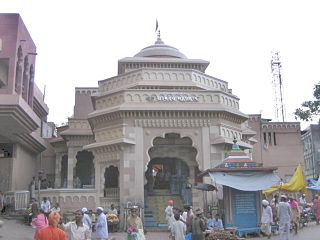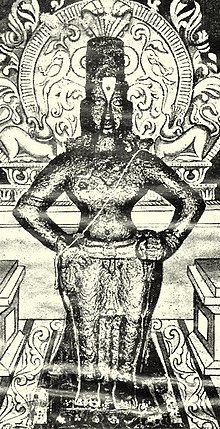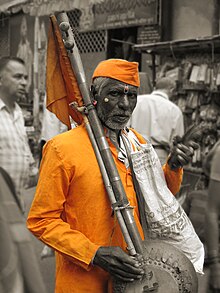The various names are generally an indication that local deities were eventually merged into established Vedic Gods.
For example, in South India, Tirupathi Venkatesh, Perumal and Vittoba are well known deities now equated to the Vedic Vishnu, but were independent gods, long ago.
The well known Vishnu Sahasranama (thousand names of Vishnu) was composed in the early Christian era and it does not mention the above names.
Namaste
I will not argue about Vitthal (but a vArkari will tell you that
Vittha is Dwarkadheesh Shri KRshNa who came down south first to Dindirvan from Dwarka, looking for the upset RukmiNi meditating here, because Krishna was seen with Radha (a deliberate leela Krishna wove for a purpose), went to visit Pundalik who had turned a leaf and was serving old parents, AFTER Mahabharat war, which is when Bheeshma chanted VishNusahasranama for YudhishThir in Krishna’s presence, which is why Vitthal is not a name in VishNusahasranama, , which is why Vitthal has war scars on face that He deliberately did not cure to keep Manushya leela etc.)
I will also put Venkatesh on the shelf for a few minutes.
Interim Food for Thought: At least 3 of KrishNa's ashTa mahIsI . bhArya , 8 queens (wives) were from South India and Maharashtra.
1.
Rukmini (Vaidarbhi) Krishna’s principal queen (pattarANi) was Princess of Vidarbha (modern day Nagpur Maharashtra, and vicinity – note that a lot of folk songs revolve around Vitthal – Lord standing on a Brick related to RukmiNi being upset – "Rakhumai rusli na kopryAt basli, chala jau pusayala" – Rukmini is upset, fuming in a corner, let us go and ask what the matter is)
2.
LakshmaNA was one of Krishna’s 8 queens from South India – Tamil desam
3.
SattyA (NAgnajeeti) was the Princess, daughter of King Nagnajeet from South for whom Krishna expanded into 7 identical forms to fight 7 bulls (per contest rules).
Satya - Krishna leelas are elaborated in Sangam literature and by the ALwars as well. It seems Satya = Pinnai
Why wouldn’t these provinces have first hand detail about Krishna Leela starting Dvapar itself 3000BC? And very high levels of prema bhakti towards Him? Why wait for bhagvat puran printing press?
Now for the real part:
======================================
PERUMAL
======================================
Are you seriously thinking Perumal is a proper noun? I see a lot of South Indians saying “When did Perumal turn into Vishnu and Shiv into Rudra” but see the time-linear ignorance in these words from what follows:
Peru = Para, Param, Honored/Great/Highest .
MaaL = The dark One, the Dearest One, The Almighty One and only One…. referenced in Krishna leela poetry in Sangam and Alwar literature.
So Perumal is a title, a way of addressing the Great Respected Almighty, Bhagvan.
Thriumal, Thirupati -- Thiru = Shri , Pati = Guardian, Head
(Why is Thirumal Thirupati VenkaTesh called Balaji and Govinda? More food for thought).
And incidentally, the pre-Alwar Tamiz people, the Sangam literature community,
headed by Agashthya Muni who was Dispatched by Shiv from Himalayas to TamiL NaDu, also spoke about the same VishNu as Perumal. The same Sangam also talked about Devi, Ganapati, Kartikeya-Murugan and Shiva (the Red One).
Are you telling me that
VenkaTesh Perumal =/= Varadaraaj Perumal =/= Kari Krishna Perumal =/= Lakshmi Narayan Perumal =/= Satyanarayan Perumal =/= Ranganath Perumal =/= AnantaPadmanAbh swami =/= the remaining of the 108 Divya desham Perumals =/= VishNu ?!
Surprising coming from Advaita practitioner & Ajata vadi follower of GauDapAd.
This is how the people down South addressed VishNu (all pervading Omnipresent almighty Bramh)
Varadaraaj Perumal = VishNu when He came to visit
Dhruv calling His name with dvadashAkshari mantra (om namo bhagavata vAsudevAya) and
MArkanDeya Rshi asking VishNu to show His mAyA and led to Damodarashtakam – Lord as a baby on banyan leaf as the only being and no universe (karara vinde paradar vindam mukhara vinde viniveshayantaM, vaTasya patrasya puTe shayAnam balam mukundam manasA smarAmi).
The same Bhagvat was written down in TamiL and Sanskrit narrating the same.
Kari Krishna Perumal is too cute, my goodness. During Chola rule, in Tamil Nadu, people observed a cow giving milk over an anthill. The curious folks took an axe and dug the ant hill. Then found a vigraha of the cutest little GopAL Krishna holding the stick and rope for herding cows, but He titled slightly on one side to prevent blows of the axe, however, one shoulder was hurt (can’t bear to write this) – so sandalwood is applied on Kari Krishna Perumal’s shoulder every day.
(A family friend found a Tanjore Krishna on his balcony sil 10 yrs ago - adbhut!)
Consider this possibility:
5000 years from now, if the kids think that the Krishna in the 108 Temples built by A. C. Bhaktivedanta PrabhupAd is not Krishna at all, but
Shyamsundar, Gopinath, Madhav, Parthasarthi, Neelmadhav, Vrundavanchandra, GokuLAnanda, Golokananda , Damodar, etc. as 108 different beings while Radha is just symbolic of the ideal devotee role and worse, none of them is really the Krishna of Bhagvat puran and Mahabharat, and worse, they are different from Vishnu and Krishna is not Vishnu!
How would the ISKCON devotees of today feel if they were told about this predicted future ignorance due to missing links in history?
From a Quora Contributor:
Perumal means an individual with a set of personality and character as i have mentioned below, Perumal is a commonly used term for a benevolent, kind and compassionate King. Lord Vishnu is considered as a emperor hence the title Maha Vishnu, else he would have been called as Sri Vishnu (Sri is a title equivalent to Sir) whereas “Maha” title is equivalent to His Highness or His Excellency.
Lord Vishnu is called Perumal for the following reasons (Perumal Meaning in Tamil)
· Person of Immense Caliber
· Who is capable of relentless work
· Who is Tenacious, Perseverant with immense patience
· Extremely charming personality
· Organized and Methodical approach
· One who enjoys contact with Public
· One who gets attracted to poetry and music
· One who is immensely romantic in nature
So, Perumal is a title again, hence we have Venkatesha Perumal, Varadaraja Perumal, Narayana Perumal etc. who are kings
@Viraja may want to throw more devotional plus historical light on this.




